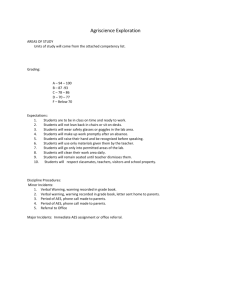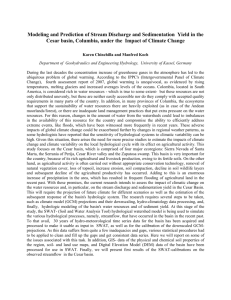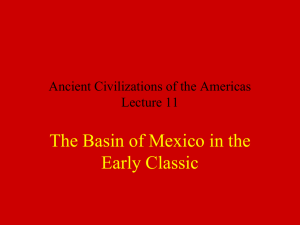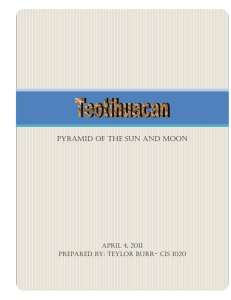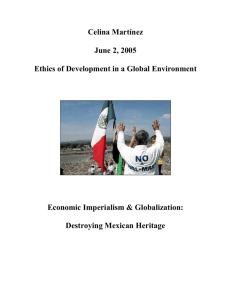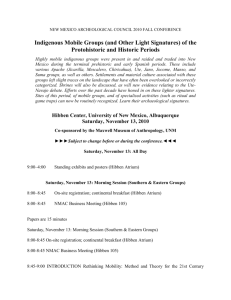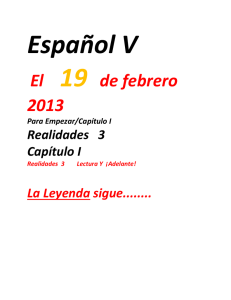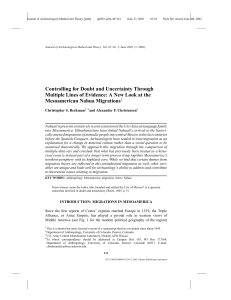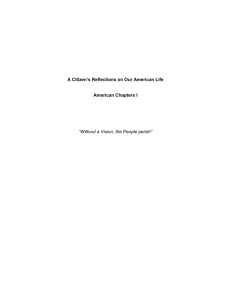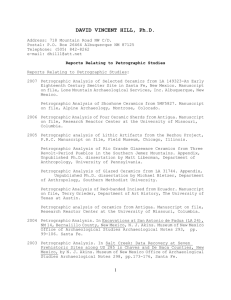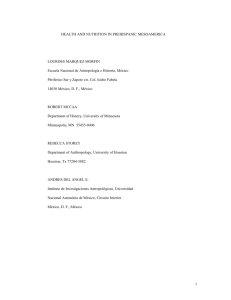Hazards and Impact group: Emily McClung de Tapia
advertisement
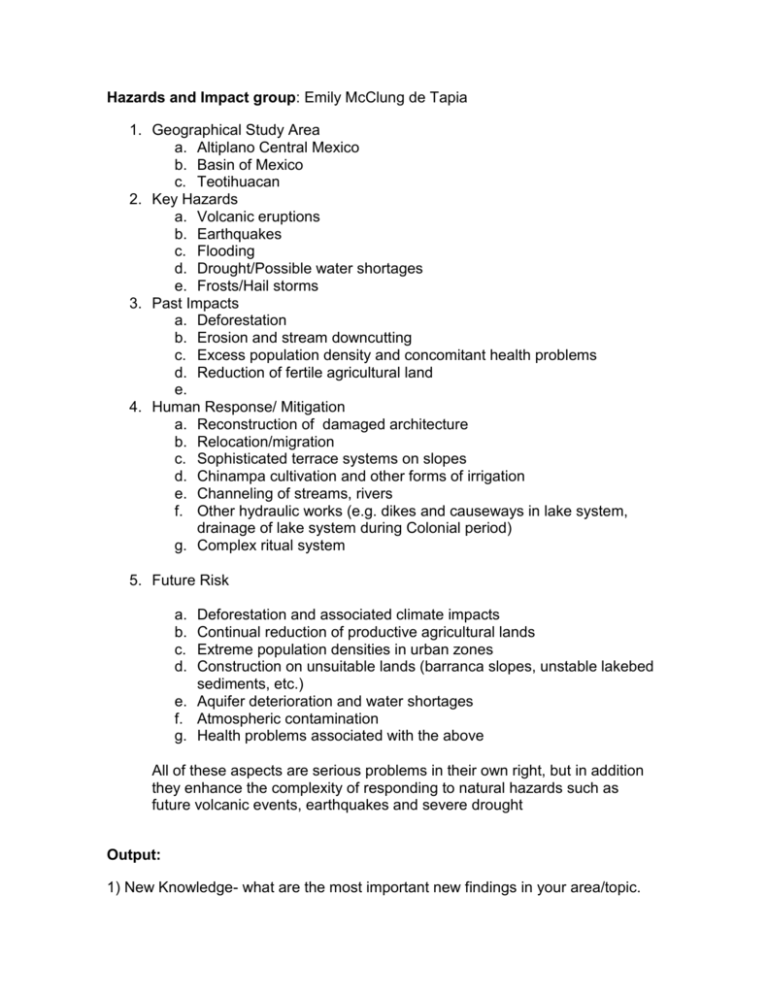
Hazards and Impact group: Emily McClung de Tapia 1. Geographical Study Area a. Altiplano Central Mexico b. Basin of Mexico c. Teotihuacan 2. Key Hazards a. Volcanic eruptions b. Earthquakes c. Flooding d. Drought/Possible water shortages e. Frosts/Hail storms 3. Past Impacts a. Deforestation b. Erosion and stream downcutting c. Excess population density and concomitant health problems d. Reduction of fertile agricultural land e. 4. Human Response/ Mitigation a. Reconstruction of damaged architecture b. Relocation/migration c. Sophisticated terrace systems on slopes d. Chinampa cultivation and other forms of irrigation e. Channeling of streams, rivers f. Other hydraulic works (e.g. dikes and causeways in lake system, drainage of lake system during Colonial period) g. Complex ritual system 5. Future Risk a. b. c. d. Deforestation and associated climate impacts Continual reduction of productive agricultural lands Extreme population densities in urban zones Construction on unsuitable lands (barranca slopes, unstable lakebed sediments, etc.) e. Aquifer deterioration and water shortages f. Atmospheric contamination g. Health problems associated with the above All of these aspects are serious problems in their own right, but in addition they enhance the complexity of responding to natural hazards such as future volcanic events, earthquakes and severe drought Output: 1) New Knowledge- what are the most important new findings in your area/topic. Both ancient and modern urban societies take highly productive agricultural lands out of circulation, either to expand ceremonial areas or habitation zones. In the case of Teotihuacan, this consisted of filling monumental structures with soil from adjacent agricultural areas; today, in the Basin of Mexico as well as many adjacent areas, the deep soil plains are built up with housing developments and commercial centers. Problems of scale, temporal and spatial, are apparent in numerous contexts. For example, I have heard archaeologists argue that because drought was evident in lake cores in several parts of the Maya region, 14C-dated to between AD600-800, then drought probably affected Teotihuacan as well! While that may be the case, at the moment there´s no clear evidence for it! There are many assumptions of this sort in the literature and on display in conferences, but little consciousness about what would be necessary to demonstrate them. Although soil analyses are providing useful evidence for climatic change, the scale is quite different from what one would need to relate such processes to specific cultural events sucha as the downfall of Teotihuacan. Also, we’re still experimenting with methods… it takes time to figure what works and what doesn´t. Payson’s original comments suggest the importance of defining vulnerability and understanding resilience as a function of the degree of vulnerability. There is a lot of literature related to this… but I´m kind of bogged down at the moment to backtrack on what I have read in this area. 2) Your top 5 emerging new research questions Related to Teotihuacan and the Basin of Mexico in general: a. How can certain kinds of events/responses be detected in the archaeological record? What are the archaeological signals for human impact? b. When did significant ecological change/impacts begin? It looks like the beginning of the Colonial period is a good possibility. Can we completely rule out the Ecological Indian? To what extent can we differentiate intention (such as controlling slope erosion by building agricultural terraces) from consequences (devastation caused by erosion following abandonment of terraces following unexpected political economic events)? c. What are the real causes of ecological destruction? d. How to optimize the application of established techniques to new situations (for example, certain types of soil analyses or stable carbon isotopes to questions concerning climate change and human impact). e. Response times for different organisms to different impacts: plants, people, other fauna. How can we evaluate changing frequencies of plant remains, faunal remains in the archaeological record in relation to possible climate change or human impact? 3) Fundamental limits to progress General: Time, suitable organizational skills, assistance at different stages of research, Stronger theoretical background in related sciences Lack of political vision on the part of authorities leading to lack of adequate financial support for research and support for appropriate educational programs. Short term goals vs. long-term benefits. Specific: Inadequate understanding of interdisciplinary goals and requisite academic formation 4) Blockages that can be removed by collective action: Better communication among different research areas Intensive archaeological research in key areas like the Basin of Mexico, but there are others. Because of the extremely intensive development of this particular area, archaeological sites reported during the 60’s and 70’s are disappearing at lightning speed. Also, paleoenvironmental studies are rarely undertaken in areas where constructions expose long sequences. 5) Action Areas related to 2, 3, 4 above: Encouraging undergraduate and graduate research in interdisciplinary directions, with a clear vision of how to acquire the necessary experience. In Latin America, at least, this is a real challenge…. 6) Synergy of research with outreach, education, heritage development Working with NGO’s and authorities to promote educational programs, building programs like Habitat, 7) Deliverables (immediate, + 1 year, + 5 years) I really need time to think this one out! Within these time spans I can think of individual/group research results, but beyond the meeting circuit appropriate to different disciplines, I can’t think of very productive venues. In terms of products, I and many of us are not too skilled at looking beyond our academic ivory tower.




